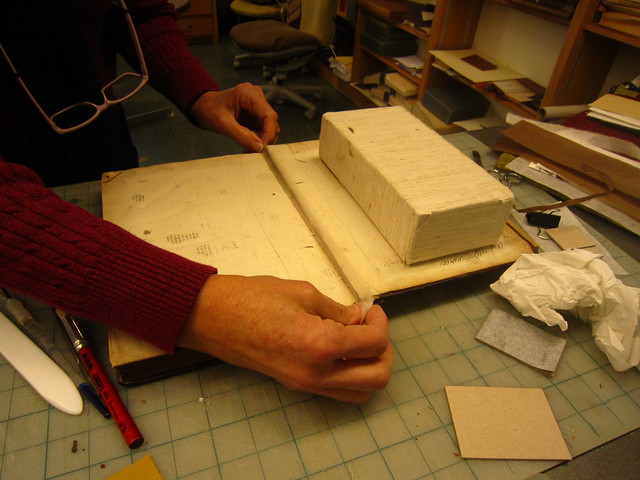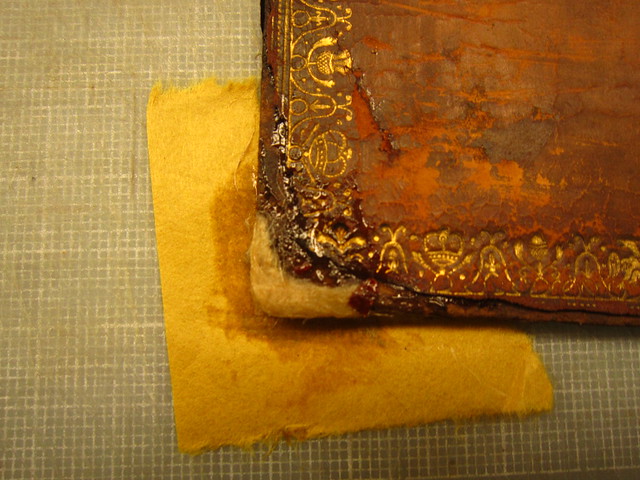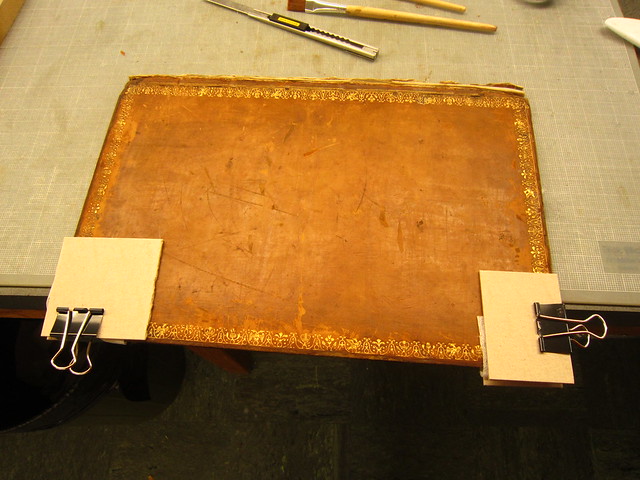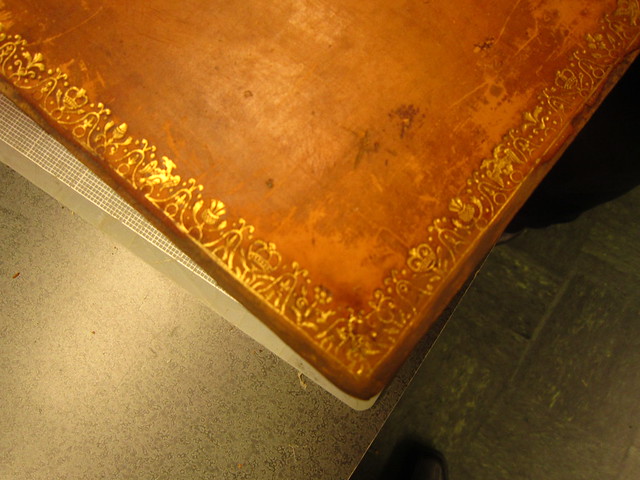This article is more than 5 years old.
We go to training for a variety of reasons, but often because you may have good basic skills, but need to get to another level. You need someone at a higher skill level to show you the ‘tricks’ that will help you excel and help your work rise to a higher level of accomplishment.

Isabella Baltar and Preservation Student Assistant, Lauren Peirish
On Friday, February 13, 2015, Isabella Baltar, from UNCG spent the day training me and my student assistants. Isabella holds degrees from two universities in Brazil; a BA in Museology from Universidade Federal do Estado do Rio de Janeiro and an MA in Art History from Pontifícia Universidade Católica do Rio de Janeiro. She also spent 6 years working under Don Etherington at the Etherington Conservation Center in Browns Summit, NC.
Repairing a broken internal hinge
Isabella and I worked exclusively on Special Collections books bound in leather. We have so many leather bound books that have loose boards and bad joints, that it seemed the best use of our time. We covered may topics such as the use of Klucel-G (a leather consolidant) and SC6000 (a leather wax). We worked on reattaching loose internal joints on books using Japanese paper. Isabella also led me through the steps of restoring damaged head-caps and damaged corners of the books. This process involved creating a Japanese paper support on the corner of the board. Then a papier mache-like form is created from shreds of twine to reconstitute the missing portion of the book cover. This form is pressed and allowed to dry, after which, it is toned with either acrylics or gouache to match the leather on the cover. After the toning is completed, it is hard to tell where the work begins and ends. This technique is commonly used by book conservators and one that we can use in our lab.
Repairing a missing head-cap
We used rice starch paste and PVA adhesive to repair missing pieces of our books. The first step is to attach a piece of Japanese paper on which you build back the shape of the missing piece. To do this, we shredded jute twine and added paste to recreate the missing shape.
We then let this piece dry, covered it with Japanese paper and clamped it between pieces of binders board to dry.
After the repair dried, we used acrylic and gouache paint to tone the repair and match it to the color of the surrounding leather. We even tried to replicate the gold tooling on the leather. The final product is quite presentable and will last indefinitely.
The work we did was very helpful and I am very appreciative of the training I received from Isabella Baltar. Thank you UNCG Preservation for lending Isabella for a day to help us out. We are better equipped because of this experience.






1 Comment on ‘Preservation Training From Our Friends at UNCG’
Wow, the final product is really impressive!